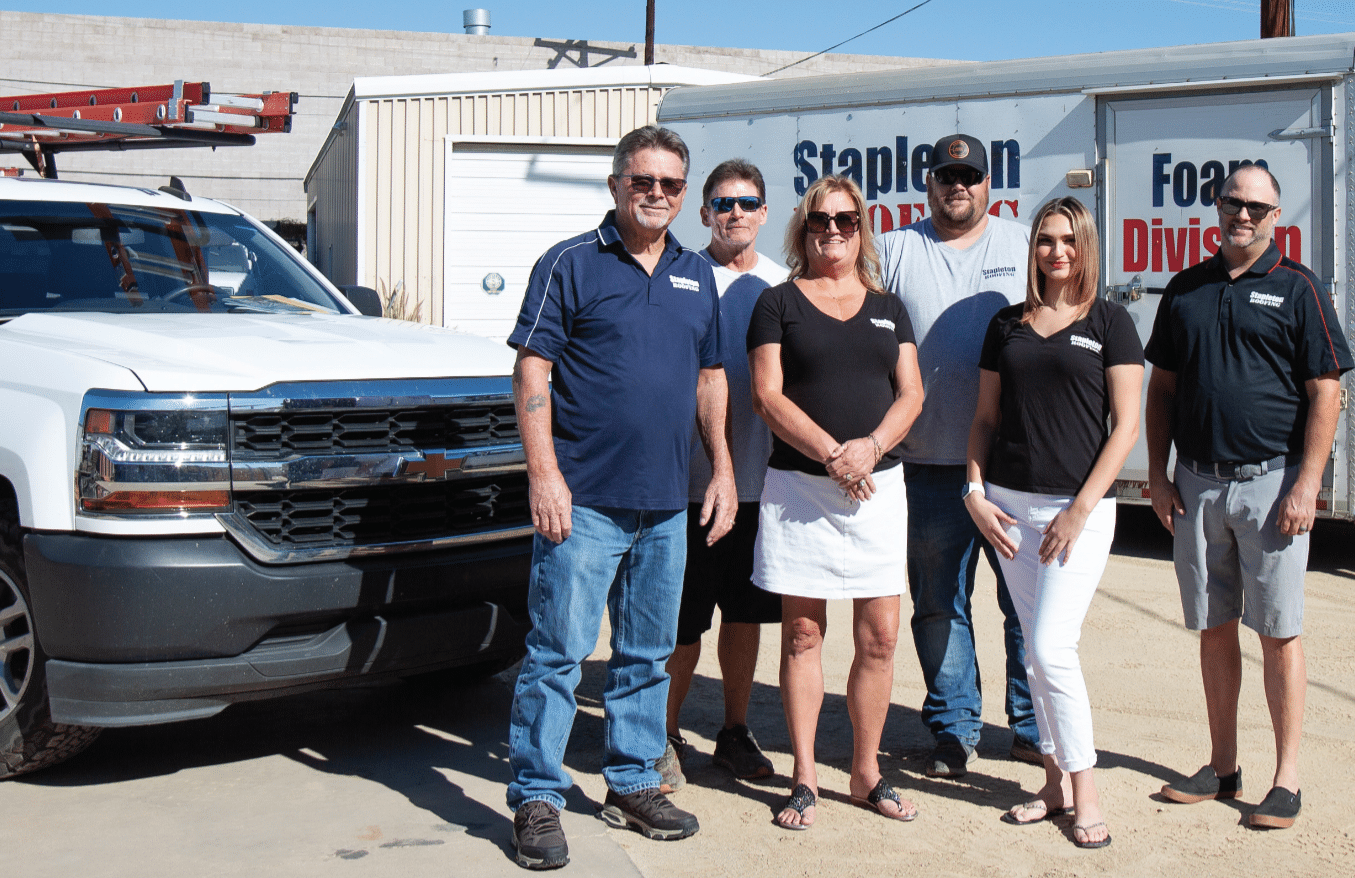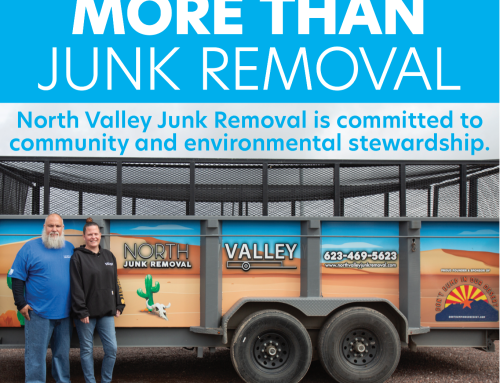By Shay Moser
Photos by Kimberly Carrillo
This summer, Arizona endured 55 days at or above 110 degrees, and when the season totals are released, it may be one of the driest monsoon periods. But your roof did its job keeping you out of the sun, right? Yes, but while you replace sunburned plants, you should check the health of your roof. Just as your air-conditioning worked overtime this summer, so did your roof.
“I guarantee the heat this summer has destroyed more roofs than people think,” says Pat Stapleton, president of Stapleton Roofing in Phoenix. “And when the winter rains hit, which are coming soon, there are going to be a lot of people in a lot of trouble.”
A third-generation roofer, Stapleton started roofing out of high school and worked up to foreman, supervisor, and roof sales for the past 20 years. In 2010, he and his wife, Cindy, opened Stapleton Roofing “because we felt we could do a better job than most,” he says.
The most challenging part of starting the business, he says, was finding quality roofing crews that could follow his rules and regulations and place roofs how he wanted.
“We’ve grown the business enough to have good help, supervisors, and crews. We remove everything down to the wood substrate to determine if there is rotten wood, but some companies will place new underlayment over old underlayment. We never have any complaints. Everyone is proud of their work, and they do a good job.”
Preventing Roof Damage
As Arizonans know and the experienced Stapleton Roofing crew sees regularly, the sun isn’t the roof’s only threat. Thunderstorms, hail, heavy winds, and other severe weather conditions constantly pummel a home’s protector. A roof will stand firm through many tests, but sometimes it needs a little boost or repair. When it comes to storm damage and your roof, Stapleton Roofing recommends three categories of action: prevention, inspection, and restoration.
“Since it doesn’t rain a lot, when it does, it rains hard,” Stapleton says. “That’s also what gets people in trouble. It goes so long without rain that people think their roof is fine. Suddenly, when it rains hard, your roof leaks.”
He says that when bad weather is brewing on the horizon, a few quick preparations can help protect your roof. First, make sure all loose items in your yard have been brought in or secured. This includes lawn ornaments, patio furniture, or some loose hanging decorations.
Second, ensure no branches are within six feet of your roof. In high winds, tree limbs can act like whips or even snap off and impact your roof. Third, clean out your gutters and drainage systems. Ensuring no blockages are present will help keep water flowing as it should and protect your home.
“Tree branches are the big killer for us,” says Stapleton. “When the wind blows, the branches get caught in the tile. So, you want to trim your trees and the branches off your roof.”
Inspecting Your Roof
While you can prepare your yard to prevent roof damage, bad weather can still harm it. That’s why inspecting your roof is essential before and after bad weather.
Stapleton says beforehand, on shingle roofs, it’s a good idea to check for cracked or worn boots around pipes; excessive amounts of shingle granules in your gutters; missing, warped, or broken shingles; and shingles that are curling or buckling. Look for shifted tile, exposed underlayment, and lifted vents on tile roofs.
“Each of these can lead to larger problems with your roof, including potential water leakage during the next storm,” he explains.
You can also call Stapleton Roofing to do the inspection. It’s free to have your roof assessed.
Stapleton stresses to make sure your homeowners/property insurance is current. He says most insurance companies will cover storm damage but won’t replace an old, neglected roof. Additionally, most insurance companies will provide a discount when a roof is replaced.
It’s also important to know that not all states require contractors to have a license to perform work, says Stapleton. “Arizona has a regulatory agency, known as the Arizona Registrar of Contractors, which requires roofing contractors to have a license to perform work legally. It requires a minimum of a two-year warranty from the contractor.” And in most cases, it’s recommended to obtain three bids. You can check the status of any licensed contractor at azroc.my.site.com/azroc/s/contractor-search.
How Long Will Your Roof Last?
Even with the best prevention and inspections, roofs must be replaced at least once in their lifetime. If your house was built over 15 to 20 years ago, it will be ready for a reroof anytime, says Stapleton.
He warns that tile roofs aren’t as easy to determine the condition without lifting the tile to view the underlayment. Signs of a failing roof are shifted tile, damaged facia, or damaged wood under the eave. Shingle roofs are more accessible to view when there is damage to the roof. You will see rotten wood, and the shingles will lose their granules and curl up.
“Start inspecting your roof when it’s 15 years old,” Stapleton says. “It’s time for a new roof if it’s 20 years old. And don’t put solar panels on old roofs; it’s costly to have them removed and replaced, which we’re seeing a lot of lately.”
The cost of your roof depends on the size and complexity of the roof.
“If I evaluate a roof and it doesn’t need repair or replacement, I tell them they don’t need anything,” says Stapleton. “I’ll tell them to call me next year, and we’ll look again.”
Visit Stapleton Roofing at stapletonroofing.com or call 602-833-ROOF (7663) to schedule a free estimate.
This content is sponsored by Stapleton Roofing.





